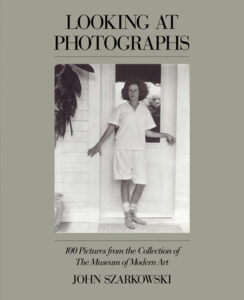I presented the fourth session in my five week course on Reading Photographs yesterday. We considered how five respected commentators approached the reading of photographs. A quotation from John Berger was a starting point:
A photograph is a meeting place where the interests of the photographer, the photographed, the viewer, and those who are using the photographs are often contradictory. These contradictions both hide and increase the natural ambiguity of the photographic image. (2008)
John Szarkowski, Photographer and Director of Dept Photography MoMA His approach focused on: ‘straight’ photography using the medium’s essential qualities; a choice of liberal subject matter; strong formal content; the presentation of fragments of actuality pictorially organised; and the achievement of the photographer’s strong personal vision.
David Hurn & Bill Jay – Magnum photographer; writer and teacher They argue that: meaning is slippery; merit is rare; art is different from documentary; and morality, a sense of responsibility, is important. For them: the subject should evoke a reaction in the photographer; maximum clarity for the full expression on the subject matter is vital; careful composition is important; and the exposure must be made made at the right moment. They distinguish between what a photograph is of and what it’s about.
Ian Jeffrey – photo historian and writer on photography Jeffrey treats photographs as evidence of past times and events and as evocators of feelings. His approach is to explore the biography of photographer, technique, subject matter and the historical context.
Geoff Dyer – writer and cultural commentator He looks at photography in the wider social and cultural contexts and within the history of the medium. Dyer argues for close reading to yield new knowledge, while acknowledging that this may create confusion or perplexity.
The presentation ended with three more quotes.
For a work of art to succeed it must go deeper than a mere visual record. Frances Spalding
A photograph is a secret about a secret. The more it tells you the less you know. Diane Arbus
Photographs, which cannot themselves explain anything, are inexhaustible invitations to deduction, speculation, and fantasy. Susan Sontag
References
- Looking at Photographs, John Szarkowski, Museum of Modern Art, 1973
- On Looking at Photographs, David Hurn and Bill Jay, LensWork 2000
- How to Read a Photograph, Ian Jeffrey, Thames & Hudson, 2008
- The Ongoing Moment, Geoff Dyer, Canongate, 2005
- See/Saw, Geoff Dyer, Canongate, 2021


